-
Some citizens of low-lying Pacific island nations seeking climate-change refugee status
More and more resident of Pacific island nations and territories are trying to claim refugee status in Australia and New Zealand, arguing that rising sea levels, caused by climate change, are forcing them out of their homes and destroying their livelihood. The New Zealand High Court has rejected the refugee status petition of Loane Teitota and his family, citizens of Kiribati, a low-lying Pacific Island nation near the equator, saying that Teitota’s argument was “novel” and “optimistic.” The court cautioned that if the argument were adopted, then millions of people suffering from the effects of climate change would seek refugee status in New Zealand or any other country.
-
-
Federal, state chemical safety agencies increasingly hampered by budget cuts
The budgets of state and federal agencies tasked with responding to the Elk River chemical spill have recently been cut, and these cuts have limited these agencies’ ability to prevent or respond to disasters such as the water crisis in West Virginia. “We do less,” said a CDC financial official, when asked the results of cuts. “What [the CDC director] has often been quoted as saying is that threats are not going down and so it is concerning to not be able to grow with the public health threats.”
-
-
Increase in wildfires may significantly degrade air quality, health in the future
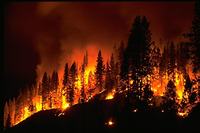
As the American West, parched by prolonged drought, braces for a season of potentially record-breaking wildfires, new research suggests these events not only pose an immediate threat to people’s safety and their homes, but also could take a toll on human health, agriculture, and ecosystems.
-
-
The combination of drought and warming climate places severe strain on California’s water supply
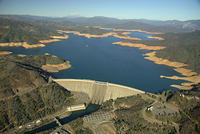
As stores of water in the West are reduced — whether by usage in drought, evapotranspiration in heat, or both — warming temperatures also see the snowpack on the wane. The two phenomena together could put severe strain on water supplies, with implications for ecosystems, industries, and people alike. Even at their most severe, the droughts of decades and centuries past did not occur in tandem with today’s degree of temperature change or have to contend with the demands of a population that in California alone now numbers above thirty-eight million residents. As needs for water grow ever greater, so, too, do the potential threats to its supply.
-
-
The world likely to face more frequent, and more severe, blackouts

U.S. household electricity usage increased by 1,300 percent between 1940 and 2001. In the last few decades, air conditioning has been the greatest factor in increased electrical consumption, and one of the greatest sources of systematic strain, with considerably more blackouts occurring in the summer months than during winter. The electricity used to fuel America’s air conditioning is currently of a similar volume to the U.S. entire energy consumption in the 1950s. A new study reveals that today’s occasional blackouts are dress rehearsals for the future, when they will occur with greater frequency and increased severity. Power cuts will become more regular around the globe as electrical supply becomes increasingly vulnerable and demand for technology continues to grow at an unprecedented rate.
-
-
Natural flood management as a solution against future flooding
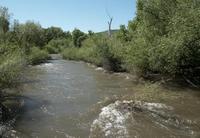
Natural Flood Management (NFM) aims to reduce the downstream maximum water height of a flood — the peak — or delay the arrival of the flood peak downstream, increasing the time available to prepare. Back-to-nature flood schemes which use the land’s natural defenses to slow river flow and reduce flooding could be a cost-effective way of tackling one of the biggest problems facing the United Kingdom today.
-
-
Deepwater Horizon: Identifying harmful elements of persisting oil
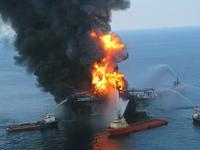
Scientists are unraveling the composition of persisting oil residues collected from Gulf of Mexico beaches following the Deepwater Horizon disaster, insisting on further assessment of the toxic impact of these chemical remnants on the marine ecosystem. A new study targeted the most abundant compounds in the residual oil, dissecting their composition with unprecedented accuracy. This is important for understanding the environmental impact of persisting oil remnants, because ecotoxicologists have demonstrated that all three chemical groups can be harmful to living organisms. More worrisome, relatively little is known about the broader toxicity of saturates and oxygenated hydrocarbons in the marine ecosystem, like the Gulf of Mexico —where there are 223 offshore oil rigs — even though these compounds constitute most of the persisting oil.
-
-
Israel considering earthquake-proofing important Biblical-period structures
Israel is located in one of the world’s earthquake-prone areas, along the friction point of the African and Arabian tectonic plates.Officials in Israel are taking preventative measures to protect the country’s most important ancient sites from earthquake damage. Engineers from the University of Padua in Italy have installed sensors throughout the Tower of David, one of Jerusalem most important historical sites, to determine what sort of earthquake-proofing may be needed. Some experts opined that in the event of an earthquake, Jerusalem’s most ancient structures might actually be the city’s most dependable. “If they still stand after so many earthquakes during the last 2,000 years, they must be good structures,” one of them said.
-
-
Thumbnail-sized quantum cascade laser, tuning forks detect greenhouse gases
Human activities such as agriculture, fossil fuel combustion, wastewater management, and industrial processes are increasing the amount of nitrous oxide in the atmosphere. The warming impact of methane and nitrous oxide is more than 20 and 300 times, respectively, greater compared to the most prevalent greenhouse gas, carbon dioxide, over a 100-year period. Methane and nitrous oxide detection is crucial to environmental considerations. Scientists use a thumbnail-sized quantum cascade laser (QCL) as well as tuning forks that cost no more than a dime to detect very small amounts of nitrous oxide and methane.
-
-
Central U.S. faces threat of major earthquakes
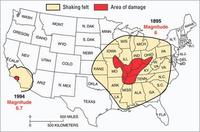
In the winter of 1811-12, the New Madrid Seismic Zone in central United States produced four powerful earthquakes (magnitude 6 and higher). The region has experienced a steady series of smaller earthquakes since. A debate has swirled in recent years, fueled in part by past studies suggesting that continuing New Madrid seismic activity could be the tail end of a long-lived aftershock sequence following the 1811-12 earthquakes. If the seismic activity since 1811-12 is an aftershock sequence, the argument goes, then there is no evidence that stress is currently building in the zone. A new study concludes, however, that the level of activity since 1811-12 must be the signature of active, ongoing processes that continue to generate stress in the region —stress which is expected eventually to be released in future large earthquakes.
-
-
“Virtual earthquakes” used to forecast Los Angeles quake risk
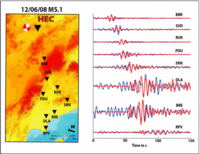
Stanford scientists have developed a new “virtual earthquake” technique and used it to confirm a prediction that Los Angeles would experience stronger-than-expected ground motion if a major quake occurred along the southern San Andreas Fault. The new technique capitalizes on the fact that earthquakes are not the only sources of seismic waves – rather, there is also an ambient seismic field consisting of much weaker seismic waves. The scientists devised a way to make these ambient seismic waves function as proxies for seismic waves generated by real earthquakes. By studying how the ambient waves moved underground, the researchers were able to predict the actions of much stronger waves from powerful earthquakes.
-
-
Texas wants to know whether fracking causes earthquakes
Texas has about 35,000 active injection wells. About 7,000 of Texas’s injection wells are used for disposing wastewater deep underground, and some experts say these wells can cause earthquakes. In response to the several minor earthquakes which occurred in late 2013 around the Azle, Texas area, local officials are investigating whether oil and gas drilling in North Texas and the injection wells that follow after, are responsible for the quakes.
-
-
Nearby Georgia basin may amplify ground shaking from quakes in Vancouver
In Greater Vancouver, there are more than 700 12-story and taller commercial and residential buildings, and large structures — high-rise buildings, bridges, and pipelines — which are more affected by long period seismic waves, or long wavelength shaking. Researchers find that tall buildings, bridges, and other long-period structures in Greater Vancouver may experience greater shaking from large (M 6.8 +) earthquakes than previously thought due to the amplification of surface waves passing through the Georgia basin.
-
-
Coastal flooding in Ireland offers warning of things to come
Flooding in Ireland and the U.K. is typically associated with heavy rainfall, but the reason for more recent coastal flooding is different. Experts say that the increases in mean sea level suggests that mean sea-level rise rather than storminess is largely contributing to the dramatic increase in the frequency and scope of coastal flooding. Major cities like Cork, Dublin, and Galway will soon feel the impact of sea-level rise, and developers are discouraged from building within 100 meters of soft shoreline.
-
-
TV audiences often do not care about suffering in other countries
Television audiences care less about suffering experienced by people in other countries when they watch the news than when they watch a range of different programs, according to new research. New research finds that study participants were in many cases indifferent to what they saw and relieved that it did not affect them, especially the younger and male viewers. There were instances, however, mostly among older and female participants, of particularly emotional responses to suffering.
-
More headlines
The long view
Using Drone Swarms to Fight Forest Fires
Forest fires are becoming increasingly catastrophic across the world, accelerated by climate change. Researchers are using multiple swarms of drones to tackle natural disasters like forest fires.
How Climate Change Will Affect Conflict and U.S. Military Operations
“People talk about climate change as a threat multiplier,” said Karen Sudkamp, an associate director of the Infrastructure, Immigration, and Security Operations Program within the RAND Homeland Security Research Division. “But at what point do we need to start talking about the threat multiplier actually becoming a significant threat all its own?”
